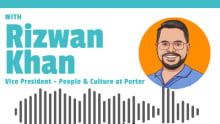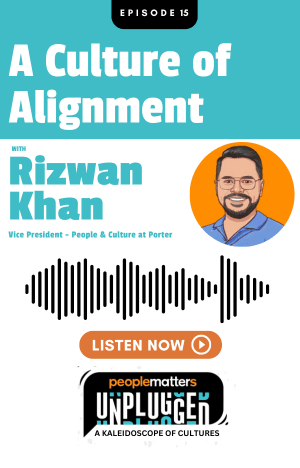A continuous skill gap analysis is a must to improve learner engagement: HR Director, Rackspace APJ

Along with The Great Resignation, organizations are facing yet another challenge -- the skills gap conundrum. The shift towards digitisation and automation has distended the skills gap further forcing businesses to innovate their capability-building approaches in the new world of work. Close to 70 per cent of employers globally are struggling to find skilled workers, especially in high-demand areas like operations and logistics, manufacturing and production, IT, sales, and marketing, according to a study by ManpowerGroup.
On one hand, employees are forced to learn new skills to augment business transformations and grow their careers. On the other hand, this widening skills gap is one of the top challenges facing global leaders today. How are they fixing this gap?
In an exclusive interaction with us, Shweta Mishra, Human Resources Director at Rackspace, Asia Pacific & Japan shared with us her skill transformation equation to prepare for the future.
Skill-building amid the continuing uncertainty comes with a lot of blockades. What are some of the challenges that you foresee in today’s environment?
The WEF has predicted that by 2022, a majority of Indian employees will require reskilling for the future. A lot of tech organizations have opened up their offices in India and some of the most in-demand skills would be AI, IoT, Blockchain, and Virtual Reality. So a technological shift is underway and more than any other economic or political cycle, this will dictate our labour market trends for the future. And that future is not very far off. This is the shift that organizations need to prepare for.
What are some of the challenges that you faced in the last 18 months when it comes to learning?
The main challenge for us was the virtual learning platform. We did not want our employees to get impacted while travelling to the office for an in-person learning opportunity. So moving our learning program to a completely virtual program has been a good challenge for us to tackle. But now we have moved into a complete virtual learning environment and enabled our employees to completely learn through online courses.
Learner engagement is the top area of improvement for virtual training in 2021, according to a study. How can organizations improve learner engagement?
The most important factor to drive engagement is that an organization should have a robust L&D team and resources. For instance, Rackspace has something called a Rackspace University-an internal website for employees for talent development. It focuses on global ways of working and engages our employees who we call Rackers. We offer state of art learning based opportunities to them. The learning and performance led team offers instructor-led training, webinars, certifications in emerging technologies like cloud pace, AWS, Azure and the likes.
So I believe the companies need to have this kind of forum. We also partner with Linux Academy, LinkedIn Learning to enable our Rackers have a plethora of knowledge practice environments. So to drive learner engagement, a company needs to build internal resources and also tie-up with external resources.
What will be your one suggestion to organizations to improve learner engagement?
I think it’s a continuous skill gap analysis – how best we can analyze the gap in a particular environment or a particular country or a particular field or region. It cannot be a one size fits all approach. For instance, the learning needs of our employees in the UK or US are very different from the needs of our employees in the APAC region. Even within APAC, the needs of Australian Rackers are very different from India Rackers. So you need to understand that and then fill the gaps accordingly. These again will be driven by the culture, role-based needs, and development opportunities available in a particular region.
Aligning the skills that workers want to imbibe in the post-pandemic world with the most in-demand skills is huge in itself. How can organizations gauge the effectiveness of their learning programs?
We do a skill gap analysis very robustly and partner with our Rackspace University team that helps us design programs wherever needed. The mini-MBA that I was referring to above is the by-product of that skill gap analysis. We also do a lot of polls and surveys to ensure that we are providing the learning and development opportunities that employees want. That’s another way of understanding the skill gap analysis.
What will be your advice to fix the larger skills gap to prepare for the future?
Organizations need to understand that it’s not that there is a learning and development gap in the employees. It is more about upskilling them for future roles. Especially in the cloud and technology industry that we are in, there’s a whole lot of competition and a lot of new products come in that the employees need to be upskilled for. Apart from providing them support for upskilling, organizations need to focus on how they are retaining and rewarding their top performers and developing future leaders. So how do you enable your top performers to be future leaders is important.
What is going to be your learning priority for Rackspace employees in the coming months?
It will be a mix of both technical and soft skills. Soft skills have specially become important in a virtual environment - how are you communicating with people when you can’t see them physically or gauge what goes on culturally in their minds. This focus on soft skills will continue post the pandemic when we start travelling and meeting people in person. And of course, upskilling in terms of a competitive market is a must to retain our top talent.















